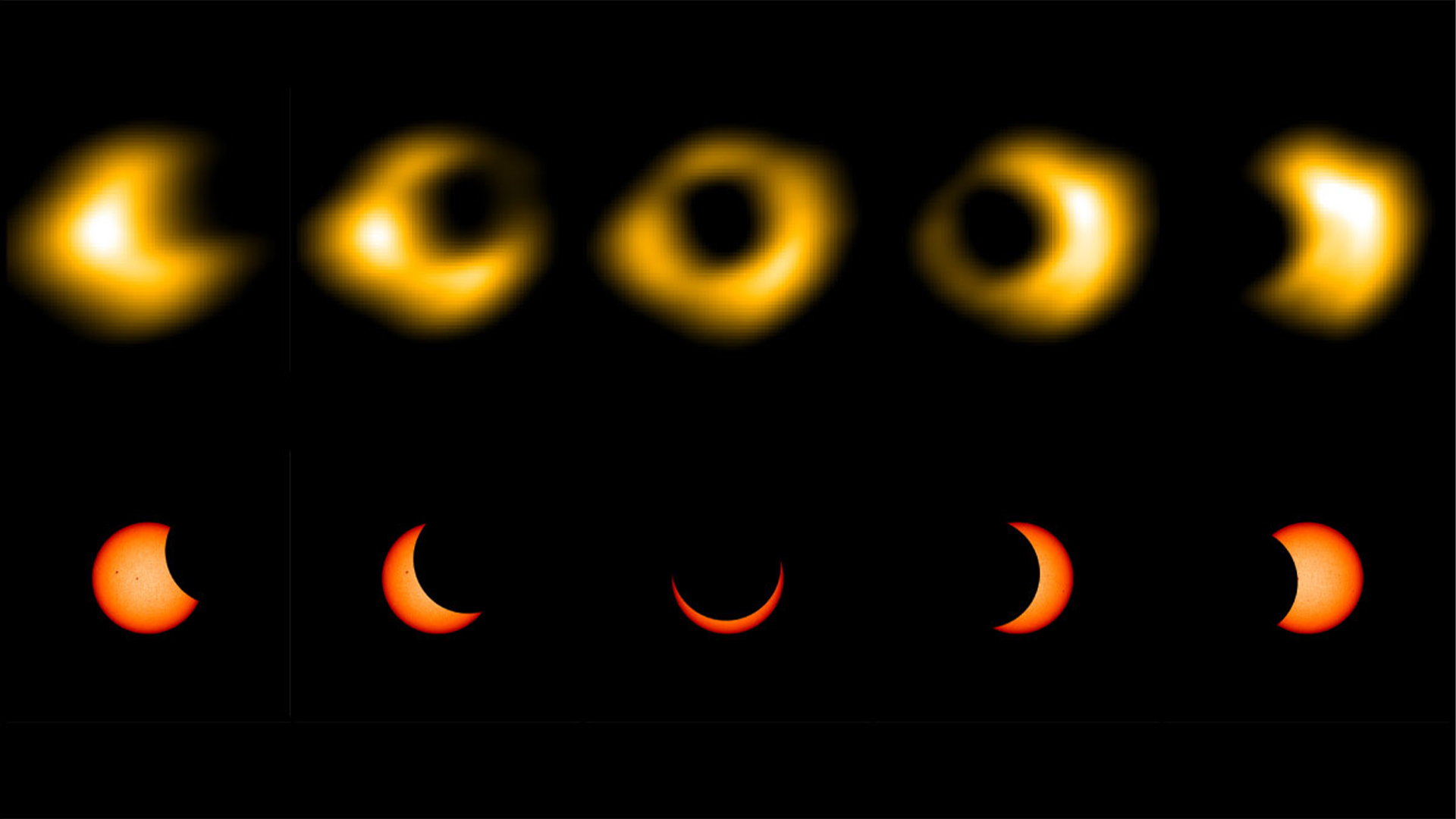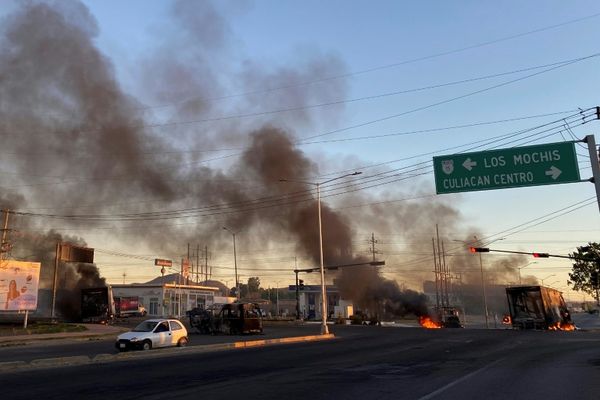
What it is: Radio images of an annular solar eclipse.
When it was taken: Oct. 14, 2023.
Where it was taken from: Owens Valley Radio Observatory Long Wavelength Array (OVRO-LWA), California.
Why it's so special: Scientists have taken the first radio telescope images of an annular solar eclipse's famous "ring of fire" effect — even though they were outside the eclipse's central path.
On Saturday, Oct. 14, 2023, an annular solar eclipse was visible from inside a 125-mile-wide belt through nine U.S. states, including the northeastern tip of California. Owens Valley Radio Observatory, in Big Pine, California, was not within that path, so it was only able to image an 80.5% partial solar eclipse, according to this Interactive Google Map from French eclipse cartographer Xavier Jubier. (Within the path of the eclipse, as much as 91% of the sun's light was blocked).
Related: The best photos of the Oct. 14 'ring of fire' eclipse over North America
However, radio astronomers were still able to capture radio images of the "ring of fire" because OVRO-LWA detected the sun's corona, or super-hot outer atmosphere, which was invisible to those watching the solar eclipse.
"From our observatory site in California we were not in the belt to see the annular eclipse, yet we've been able to 'see' it all clearly unfold in radio, which reveals a much larger solar disk than its visible counterpart thanks to its sensitivity to the extended solar corona," Bin Chen, associate professor of physics at New Jersey Institute of Technology's Center for Solar-Terrestrial Research (NJIT-CSTR) who led the observations with colleagues, said in a statement.
Radio astronomy is the study of celestial objects at radio frequencies, which are invisible to human eyes. OVRO-LWA's closeness to the path provided a unique opportunity to study the sun's extended corona with the array's 352 antennas, sampling thousands of radio wavelengths at once.
"To finally see a 'ring of fire' eclipse this way was spectacular … we haven't seen this quality of radio imaging of the sun before," Dale Gary, a professor of physics at NJIT-CSTR and co-investigator on the OVRO-LWA project, said in the statement. "We normally cannot see the corona from the ground except during a total eclipse, but we can now see it all the time with OVRO-LWA. This eclipse makes it that much more dramatic."
The annular solar eclipse on Oct. 14 also crossed parts of Mexico, Belize, Honduras, Nicaragua, Panama, Colombia and Brazil. The next solar eclipse visible from North America will be a total one, crossing from the southwest to the northeast on April 8, 2024.







